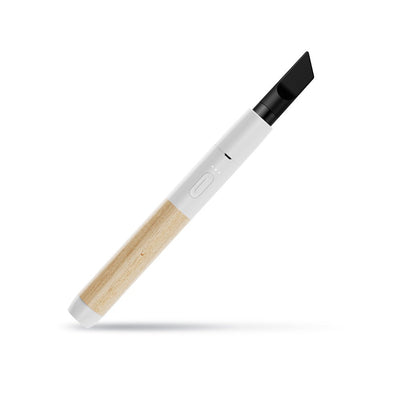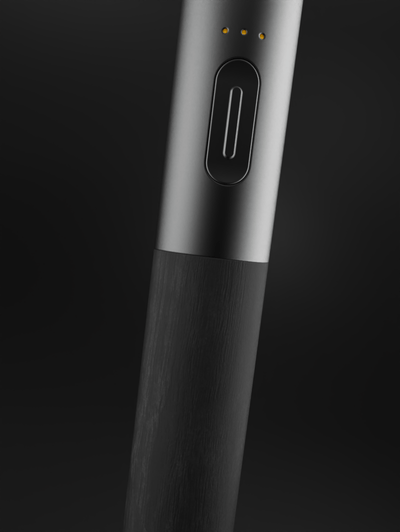Skin Pen Microneedling Near Bagshot, Surrey
Get the Facts on Dermal Fillers at It’s Me and You Clinic
Benefits of Skin Pen Microneedling
Minimally Invasive Treatment with Quick Recovery
The skin pen microneedling treatment is a minimally invasive procedure that offers numerous benefits for individuals seeking to rejuvenate and revitalize their skin. Located near Bagshot, Surrey, this cutting-edge technology provides an effective solution for various skin concerns, including fine lines, wrinkles, acne scars, and uneven texture.
One of the significant advantages of skin pen microneedling is its quick recovery time. Patients can return to their daily activities within 24-48 hours after the treatment, making it an ideal option for those with busy schedules.
The benefits of skin pen microneedling can be summarized as follows:
-
Improved skin texture: Microneedling stimulates collagen production, which helps to smooth out fine lines and wrinkles, resulting in a more even-toned complexion.
-
Reduced appearance of acne scars: By promoting collagen growth, microneedling can help to reduce the visibility of acne scars and hyperpigmentation.
-
Enhanced skin firmness: The stimulation of collagen production helps to improve skin elasticity, giving the skin a more youthful and firmer appearance.
-
Tightening of pores: Microneedling can help to minimize the appearance of large pores, resulting in a smoother complexion.
-
Improved skin tone: The treatment can help to reduce the appearance of age spots, sun damage, and hyperpigmentation, resulting in a more even-toned complexion.
-
No downtime: Although the skin may appear red or pink immediately after the treatment, this typically subsides within 24-48 hours, allowing patients to return to their daily activities quickly.
It is essential to note that skin pen microneedling is not suitable for everyone, particularly those with certain medical conditions, such as pacemakers or active acne. Consultation with a professional practitioner near Bagshot, Surrey, can help determine if this treatment is right for you.
In addition to its benefits, skin pen microneedling is also relatively pain-free, and numbing creams can be applied to reduce any discomfort during the procedure.
Stimulation of collagen production, improved skin texture, reduced appearance of fine lines and wrinkles
Microneedling with a Skin Pen device has revolutionized the world of dermatology, providing a non-surgical and minimally invasive treatment for various skin concerns. One of the primary benefits of this treatment is its ability to stimulate collagen production.
Collagen is an essential protein that gives our skin strength, elasticity, and firmness. However, as we age, our natural collagen levels decrease, leading to fine lines, wrinkles, and a loss of skin texture. The Skin Pen microneedling device works by creating micro-injuries in the skin, which triggers a response from the body’s natural repair mechanisms.
When the Skin Pen is applied to the skin, it creates tiny punctures that stimulate the production of new collagen fibers. This process helps to restore the skin’s natural texture and appearance, reducing the visibility of fine lines and wrinkles.
The benefits of stimulated collagen production are multifaceted. Not only does it improve skin texture, but it also enhances skin elasticity, reduces the appearance of pores, and gives the skin a more radiant glow. This is particularly beneficial for those looking to address concerns such as acne scars, stretch marks, or uneven skin tone.
Another significant advantage of Skin Pen microneedling is its versatility. This treatment can be tailored to suit individual skin types and concerns, making it an effective solution for a wide range of patients. It’s also suitable for delicate areas like the face, neck, and hands, as well as more resilient areas such as the arms and legs.
In addition to its ability to stimulate collagen production, Skin Pen microneedling also has anti-inflammatory properties. By reducing inflammation and promoting healthy skin cell regeneration, this treatment can help alleviate conditions such as rosacea, eczema, and psoriasis.
For those living in the Bagshot, Surrey area, seeking out a reputable practitioner to administer Skin Pen microneedling is essential for achieving optimal results. A qualified professional will carefully assess your skin concerns and create a personalized treatment plan tailored to your specific needs.
When searching for a practitioner near you, consider factors such as their experience with the Skin Pen device, their knowledge of dermal fillers and other treatments, and any relevant accreditations or qualifications. A reputable professional will also provide clear guidance on post-treatment care and maintenance to ensure you achieve the best possible outcomes from your treatment.
Non-Surgical Alternative to Chemical Peels and Laser Resurfacing
The benefits of skin pen microneedling as a non-surgical alternative to chemical peels and laser resurfacing are numerous and compelling.
For those seeking a more natural and minimally invasive approach to rejuvenating their appearance, skin pen microneedling is an excellent choice. This treatment involves the use of micro-needles that create tiny punctures in the skin, stimulating collagen production and promoting cell turnover.
Benefits:
Here are some of the key benefits associated with skin pen microneedling:
-
Reduced appearance of fine lines and wrinkles
-
Improved skin texture and tone
-
Minimized pores and enlarged pore size
-
Enhanced skin firmness and elasticity
-
Fading of age spots and hyperpigmentation
-
Reduced appearance of acne scars and hyperpigmentation
One of the primary advantages of skin pen microneedling is its non-invasive nature. Unlike chemical peels and laser resurfacing, which can be quite harsh on the skin, microneedling is a gentle and relatively pain-free procedure.
How it Works:
The process of skin pen microneedling involves the following steps:
-
Cleansing the skin to prepare it for treatment
-
Applying a topical anesthetic cream to numb the area and minimize any discomfort
-
Using a skin pen microneedling device to create micro-needles in the skin, which stimulate collagen production and cell turnover
-
Allowing the skin time to heal and recover, after which it should appear smoother, brighter, and more radiant than before
If you are looking for a non-surgical alternative to chemical peels and laser resurfacing in the Bagshot, Surrey area, consider consulting with a skincare professional to learn more about the benefits of skin pen microneedling.
How Skin Pen Microneedling Works in Bagshot, Surrey
Mechanical Stimulation of Collagen Production through Fine Needles
Microneedling with a SkinPen is a non-surgical, minimally invasive treatment that stimulates collagen production and improves the appearance of fine lines, wrinkles, and skin texture.
The procedure involves using a device called a SkinPen, which features _fine needles_ that create micro-injuries in the skin as they roll over its surface.

When these _micro-injuries_ are created, the body’s natural wound-healing process is triggered, leading to an increase in collagen production and blood flow to the treated area.
Collagen is a protein that gives structure to the skin, making it look smoother and more youthful. As we age, our bodies naturally produce less collagen, leading to the formation of fine lines, wrinkles, and sagging skin.
The _micro-injuries_ caused by the SkinPen’s fine needles stimulate the production of new collagen, which helps to plump up the skin and reduce the appearance of fine lines and wrinkles.
Another way that microneedling stimulates collagen production is through the _mechanical stimulation_ of the skin’s dermal layer. The fine needles penetrate deep into the dermis, where they cause a minor disturbance in the skin’s tissue.
This disturbance triggers an inflammatory response, which leads to an increase in the growth factors that stimulate collagen production. As a result, new collagen is produced and deposited into the skin, making it look smoother and more radiant.
Microneedling with a SkinPen can be used to treat a variety of skin concerns, including fine lines, wrinkles, scars, stretch marks, and _hyperpigmentation_.
The treatment is most effective for addressing superficial skin concerns, such as fine lines and wrinkles, and is often combined with other treatments, like chemical peels or _platelet-rich plasma (PRP) therapy_, to achieve optimal results.
The skin’s natural response to injury stimulates collagen production, resulting in improved skin texture
The process of Skin Pen Microneedling involves the use of a minimally invasive device to create micro-injuries in the skin.
These micro-injuries trigger a response from the body’s natural repair mechanisms, stimulating collagen production and resulting in improved skin texture.
Collagen is an essential protein that gives our skin its strength, elasticity, and firmness.
As we age, the production of collagen slows down, leading to the appearance of fine lines, wrinkles, and sagging skin.
Microneedling addresses this issue by inducing micro-injuries in the skin, which in turn stimulates the body’s natural response to produce new collagen.
How does Microneedling work?
-
Learn About the Benefits of Botox with Dr. Laura Geige
- The Skin Pen device is used to create micro-punctures in the skin, causing minimal damage.
- The skin’s natural repair mechanisms are triggered, leading to an increase in collagen production.
- As new collagen forms, it helps to fill in fine lines and wrinkles, giving the skin a smoother appearance.
Additionally, Microneedling also stimulates blood flow to the treated area, which promotes healing and rejuvenation of the skin.
The Benefits of Skin Pen Microneedling
- Improved skin texture and appearance
- Reduced fine lines and wrinkles
- Smoother, more even-toned skin
- Increased collagen production
It’s essential to note that while Microneedling is generally safe, it may not be suitable for everyone.
Candidates with certain skin conditions or medical history should consult a professional before undergoing treatment.
The treatment typically requires multiple sessions, spaced several weeks apart, to achieve optimal results.
No Downtime and Minimal Discomfort during Treatment
Skin Pen microneedling is a minimally invasive, non-surgical cosmetic treatment that utilizes tiny needles to create micro-injuries on the skin’s surface.
When used near Bagshot, Surrey, this innovative procedure stimulates the body’s natural healing process, prompting it to produce collagen and elastin – essential building blocks for healthy, youthful-looking skin.
The Skin Pen microneedling treatment in Bagshot, Surrey, works by creating microscopic punctures in the epidermis – the outermost layer of the skin – using a handheld device with sterile, disposable needles.
The micro-injuries trigger an immediate inflammatory response, which activates the healing cascade and prompts the production of growth factors that stimulate collagen synthesis and tissue remodeling.
Collagen production is essential for maintaining healthy, plump skin. It helps to improve skin texture and reduce the appearance of fine lines and wrinkles.
During treatment in Bagshot, Surrey, a topical anesthetic may be applied to minimize discomfort, making it possible to perform procedures with little or no downtime.
Patients often report minimal discomfort during the procedure due to the localized numbing effects of the anesthetic, which helps to reduce any sensation of pain or stinging caused by the microneedling process.
After treatment in Bagshot, Surrey, patients may experience temporary redness and mild swelling around the treated area.
The Skin Pen microneedling procedure is generally safe when administered by a trained practitioner near Bagshot, Surrey. However, it’s crucial to find a reputable provider with extensive experience in the field of dermatology or aesthetic medicine.
Consulting a Practitioner for Skin Pen Microneedling near Bagshot, Surrey
Evaluating Suitability for Treatment based on Individual Skin Conditions
When considering consulting a practitioner for skin pen microneedling near Bagshot, Surrey, it is essential to evaluate the suitability of treatment based on individual skin conditions.
First and foremost, it is crucial to determine whether you are a suitable candidate for skin pen microneedling. This minimally invasive procedure involves creating micro-injuries in the skin using fine needles, which triggers collagen production and stimulates cellular renewal.
However, individuals with certain skin conditions or concerns may not be ideal candidates for this treatment. For example, those with active acne, rosacea, or eczema should avoid skin pen microneedling as it can exacerbate these conditions.
Additionally, individuals with dark or tanned skin tones may need to exercise caution when undergoing skin pen microneedling, as the procedure can cause temporary hyperpigmentation in darker skin types.
On the other hand, skin pen microneedling is particularly beneficial for individuals experiencing signs of aging, such as fine lines, wrinkles, and loss of firmness. This treatment can help to stimulate collagen production, improving skin texture and reducing the appearance of these age-related concerns.
Furthermore, individuals with acne scars or hyperpigmentation may also benefit from skin pen microneedling. The treatment can help to improve skin texture and reduce the appearance of scars, leaving the skin looking smoother and more even-toned.
In terms of pre-treatment preparation, it is essential to follow a consistent skincare routine and avoid excessive sun exposure in the weeks leading up to the procedure. This will help to ensure that your skin is in optimal condition for treatment and minimize the risk of complications or adverse reactions.
When consulting with a practitioner near Bagshot, Surrey, be sure to discuss any concerns or questions you may have about suitability for treatment based on individual skin conditions. A qualified practitioner will assess your skin type and conditions to determine whether skin pen microneedling is an appropriate option for you.
Ultimately, while skin pen microneedling can be a highly effective treatment for various skin concerns, it is essential to approach with caution and carefully evaluate suitability based on individual skin conditions. By doing so, you can ensure that you receive the best possible results from this minimally invasive procedure.
Consultation with a practitioner to assess suitability for treatment, discuss treatment goals and expectations
A consultation with a practitioner specializing in skin rejuvenation techniques such as Skin Pen Microneedling near Bagshot, Surrey, is an essential step in determining suitability for treatment and discussing personal goals and expectations.
The initial consultation typically begins with a thorough medical history to ensure that the individual does not have any underlying conditions or allergies that may contraindicate treatment. This will include questions about skin type, medical history, previous treatments or surgeries, and current medications.
Next, the practitioner will assess the individual’s skin condition through visual examination, discussing concerns such as fine lines, wrinkles, acne scars, or hyperpigmentation. They will also inspect the texture and tone of the skin to understand the best course of treatment.
The practitioner may use a dermatoscope or a light source to examine the skin in more detail. This helps identify any underlying issues that could affect treatment outcomes, such as sun damage, rosacea, or other conditions.
Once a thorough understanding of the individual’s skin condition is achieved, the practitioner will explain the Skin Pen Microneedling procedure and what to expect from the treatment. They will discuss the potential benefits, risks, and complications associated with the procedure.
The individual’s goals and expectations for the treatment will be discussed in detail, ensuring that they have a clear understanding of what can be achieved through this non-invasive approach. This conversation will also help the practitioner to tailor the treatment plan to meet the individual’s specific needs and desires.
Throughout the consultation, the practitioner will work closely with the individual to create a personalized treatment plan, including the number of sessions required, frequency of treatments, and any additional procedures that may be recommended.

The final aspect of the consultation is usually dedicated to answering questions and alleviating concerns. This open conversation allows individuals to feel more at ease about undergoing the Skin Pen Microneedling treatment.
Possible Combination with Other Treatments for Enhanced Results
To achieve optimal results from skin pen microneedling near Bagshot, Surrey, it is highly recommended to consult a qualified practitioner who has extensive experience in this treatment.
A _qualified practitioner_ will assess your individual skin concerns and create a personalized treatment plan that suits your needs.
During the consultation, you can discuss your desired outcomes, medical history, and any medications or supplements you are taking.
The practitioner will also explain the benefits of combining **skin pen microneedling** with other treatments to enhance results.
Below are some possible combination treatments:
- Chemical peels**: Enhance penetration and maximize collagen production.
- Laser skin resurfacing: Improve skin texture, reduce fine lines, and address pigmentation issues.
- Microdermabrasion**: Exfoliate the skin to improve the effectiveness of microneedling treatments.
- Hyaluronic acid injections: Stimulate collagen production and add moisture to the skin.
The practitioner will explain each treatment in detail, discussing its benefits and risks to ensure you make an informed decision about your treatment options.
Connect with Dr. Laura Geige at It’s Me and You Clinic
When selecting a practitioner for skin pen microneedling near Bagshot, Surrey, look for someone who is:
- Experienced in microneedling treatments
- Qualified and registered with relevant professional bodies (e.g. BABTAC)
- Familiar with your individual skin concerns and creates a personalized treatment plan
- Uses high-quality equipment and sterile techniques to minimize risks
By consulting a qualified practitioner for **skin pen microneedling near Bagshot, Surrey**, you can enjoy optimal results while minimizing the risk of complications.















